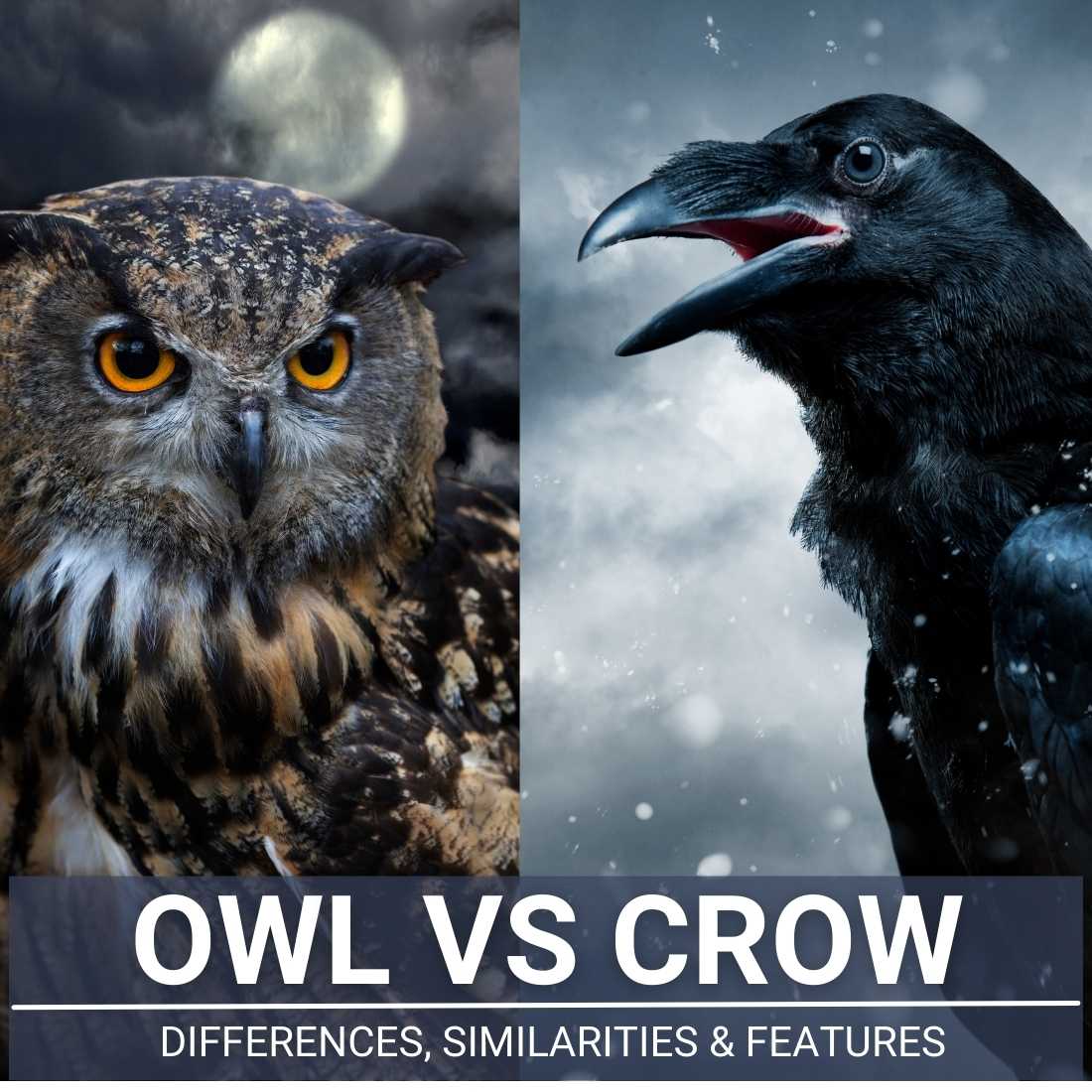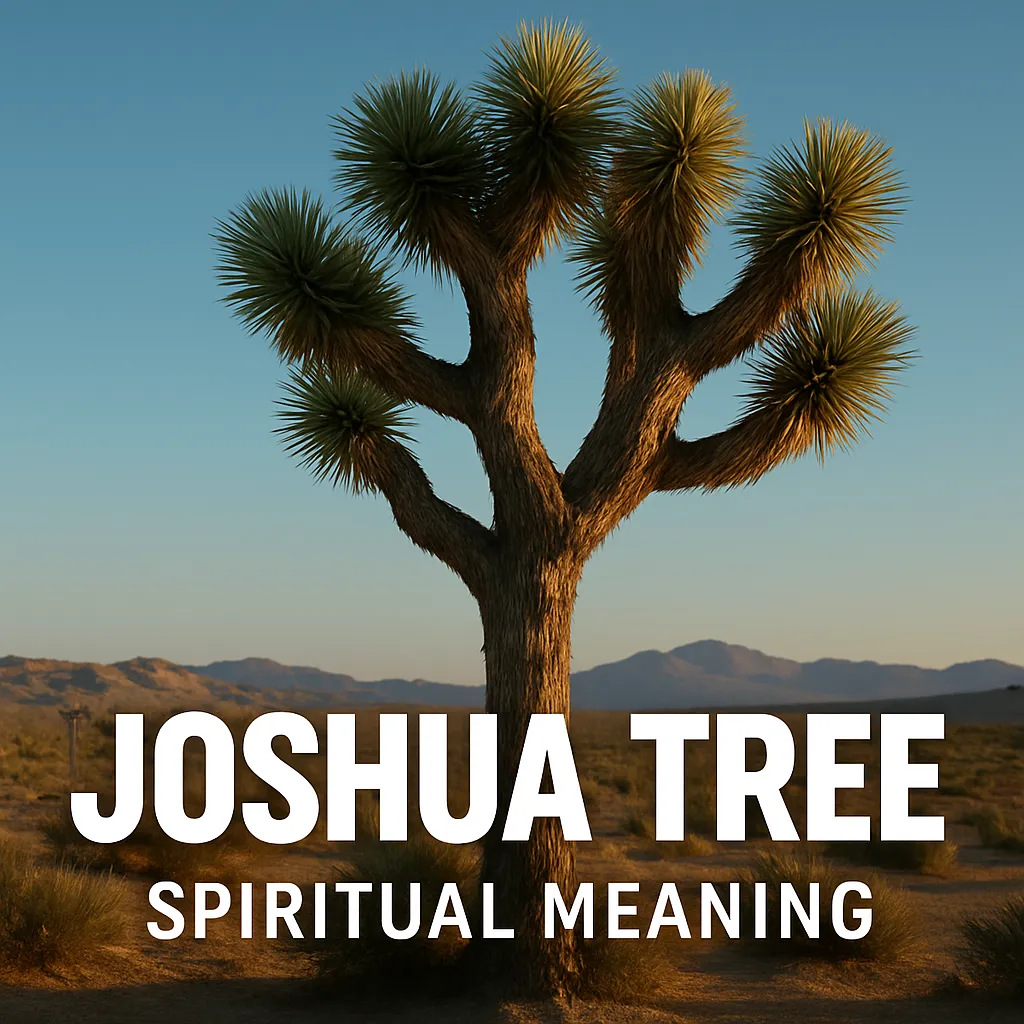|
Getting your Trinity Audio player ready...
|
Table of Contents
- 1 Key Takeaways
- 2 Overview
- 3 Differences between Owl vs Crow
- 4 Similarities between Owl vs Crow
- 5 Natural Dynamics: The Complex Relationship Between Owls and Crows
- 6 Interesting facts about Owls
- 7 Interesting facts about Crows
- 8 Field Identification Tips
- 9 Final Verdict
- 10 FAQ
- 10.1 How do you distinguish owls from crows based on physical appearance?
- 10.2 Why do crows mob owls despite the danger?
- 10.3 What types of habitats do owls and crows share?
- 10.4 How do owls hunt compared to crows?
- 10.5 Are owls nocturnal and crows diurnal?
- 10.6 How do owls communicate compared to crows?
- 10.7 Do owls and crows migrate seasonally?
Key Takeaways
- Owls are generally larger and heavier than crows, with distinctive features like heart-shaped facial disks and the ability to rotate their heads up to 250 degrees.
- While owls are primarily carnivorous hunters that prey on rodents, snakes, and small mammals, crows are omnivores that eat almost anything from seeds to carrion.
- Crows are highly social birds that form flocks of 2-8 birds, whereas owls typically live alone or in pairs and never migrate.
- Territorial conflicts between crows and owls are common in the wild, with crows often mobbing owls to protect their territory despite owls being superior hunters.
- Both birds demonstrate remarkable intelligence and adaptability, inhabiting diverse environments from forests and mountains to urban areas, using their sharp vision and problem-solving abilities to survive.
People have long been fascinated by owls and crows. These two birds are known to protect and combat each other’s territory. But owls are more robust and more complex than crows, making them superior hunters. They are also much larger and heavier than crows.
Look at this overview of the Owl vs Crow to understand them better.
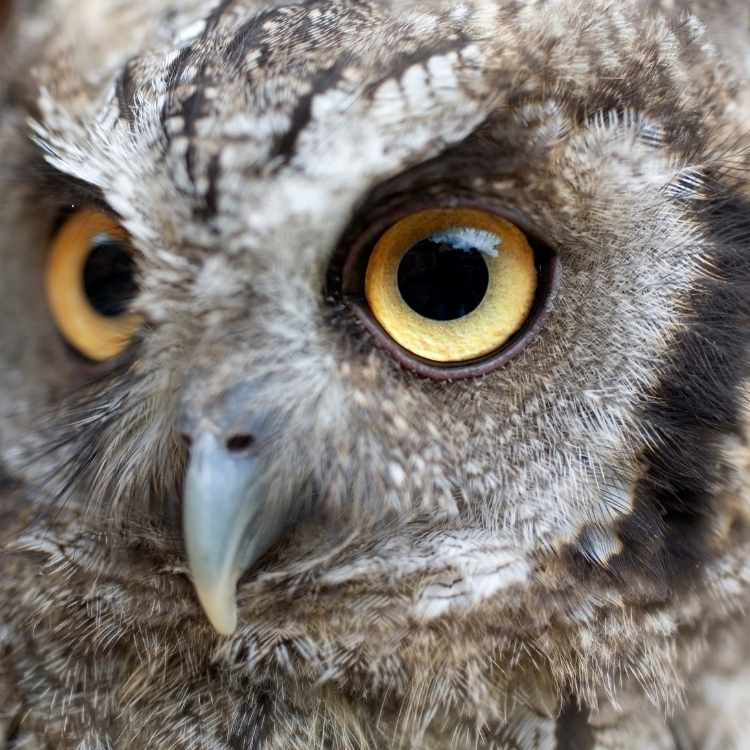
Overview
| Owl | Crow |
|---|---|
| Owls make cries, coos, whistles, and hoot sounds. | They produce caws, coos, rattles, and click calls. |
| Somewhat square-shaped tail | Fan-shaped tail |
| Owls have heart-shaped facial disks | No facial disc |
| Huge variation in size among species | Less variation in size among species |
| Known as the tiger of the air | Known as the eater of everything |
| Owls inhabit multiple environments, including mountains, coniferous woods, deserts, plains, etc | Similarly, Crows are present anywhere globally, including high-altitude forests, plains, mountain peaks, and deserts. |
| Do not make a flock. Live alone or form couples | Flock size is between 2-8 birds |
| Tan, grey, brownish, red, and white are the most common owl colors | Feather color usually depends upon species. Primarily black with somewhat white or brown. |
| Usually eat frogs, mice, squirrels, rabbits, lizards, small fish, snakes, birds, and other creatures | Eat almost anything from seeds to fruits or from meat to cheese. |
| The average lifespan is 9-10 years (wild) | The average lifespan is 13-20 years (wild) |
| Never migrate | Partially migratory birds |
| Usually have 5-12 eggs in one clutch | Have 3-5 eggs in on the clutch |
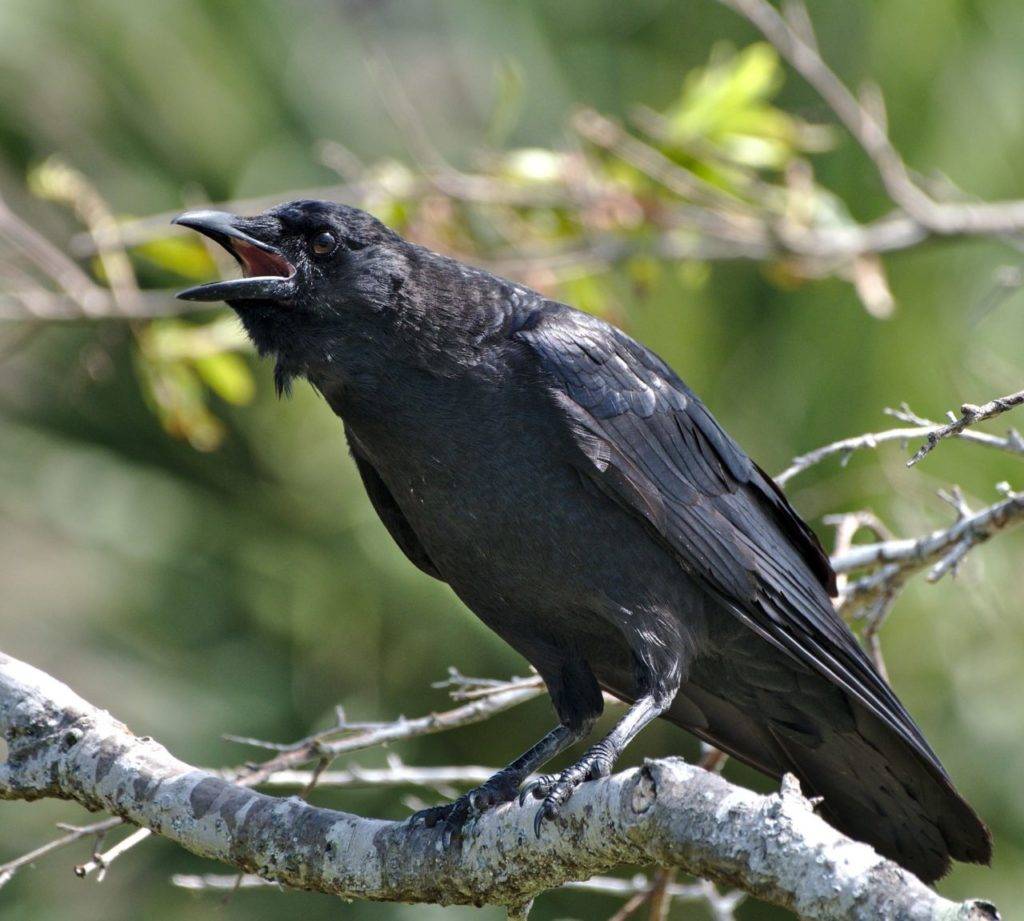
Differences between Owl vs Crow
Habitat
Owls live on almost every continent except Antarctica, and they are related to ancient humans who carried with them remote island groups. They prefer to reside in the arctic tundra, wetlands, deciduous woods, pine forests, marshy areas, agricultural zones, and in some other environments.
On the other hand, crows are widespread and may be found in almost any habitat. These remarkably adaptable birds may be seen in both urban and rural habitats. They can be found in woodlands, meadows, agricultural areas, ranches, hills, deserts, arctic tundra, and riverbeds.
Appearance
The giant spherical head and wide eyes of an owl distinguish it from other animals. They also have a downward-pointing beak and soft, cryptic-colored plumage on their backs. Males and females are very identical in appearance, except that females are bigger than males.
While the crow is a large bird with a wide neck that some find intimidating, its wings are broad with wingtips stretched forward. Their tail is usually fan-shaped.
The colors of their feathers vary from purple to black, green to brown or blue to white, depending on the sunlight. A crow with brown, scaly feathers is molting, which is the reason behind it. They have dark, strong legs and feet and a black, hooked beak with bristles over the arch of their nostrils.
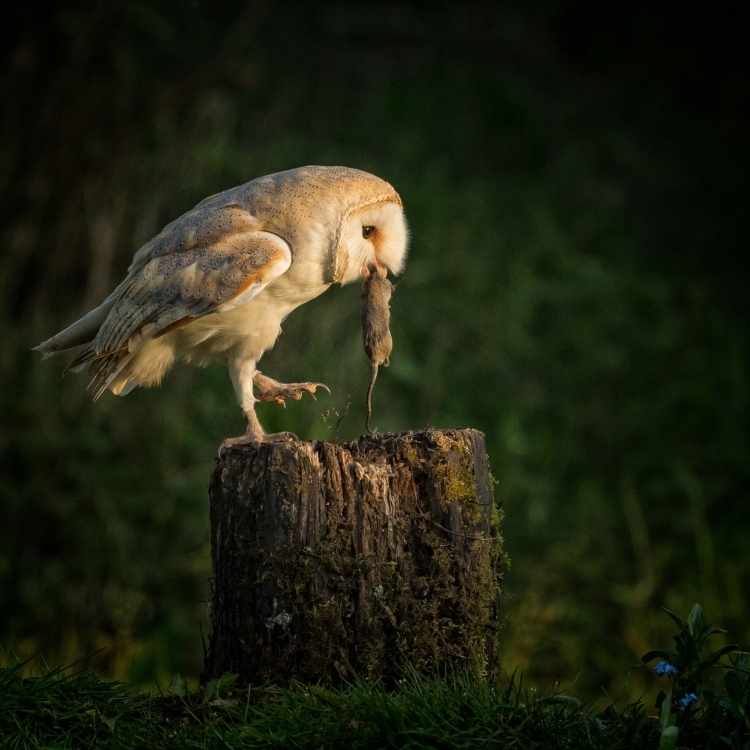
Diet
The vast majority of owls are carnivores, which means they regularly ingest meat. Numerous owl species rely heavily on tiny rodent-like animals such as voles and mice as their primary prey. Small rodents are the principal prey of many owl species, and they offer a large portion of their diet for many owl species. Frogs, reptiles, lizards, fish, mice, bunnies, birds, hedgehogs, and other mammals, as well as a variety of other prey, can all be included in an owl’s diet. Great Horned Owls may regularly find skunks (see also skunk symbolism) appetizing enough to consume in big amounts.
Crows consume various items while foraging on the ground or trees, including earthworms, ants, and other tiny critters, seeds, and fruit. Additionally, they feed on debris, carrion, and chicks taken from their parents’ nests.
Behavior
During owl mating rituals, a two-tone hoot is regularly heard, and once a pair has been formed, they will remain together until death. When it comes to nesting, most owl species do not build their own nests; instead, they colonize and make their home in the nests of other birds. It only takes a few days for the mother owl to lay between one and eleven eggs, resulting in an average of six litters per year. The incubation period begins when the eggs are laid and can last between 25 and 32 days before hatching. But incubation period varies depending on the species.
On the other hand, many crow species are solitary birds; they frequently forage in big groups. Others prefer to form huge groups in order to avoid being seen. When one of the crows dies, the remainder of the horde forms a violent swarm around him. Rather than being solemnly dedicated to the departed’s memory, this funeral is more informal in nature. The crows get together to ascertain who or what murdered one of their own.
Some crows migrate; however, others do not migrate in the classic sense of the word. They will move to warmer portions of their own territory if this becomes necessary.
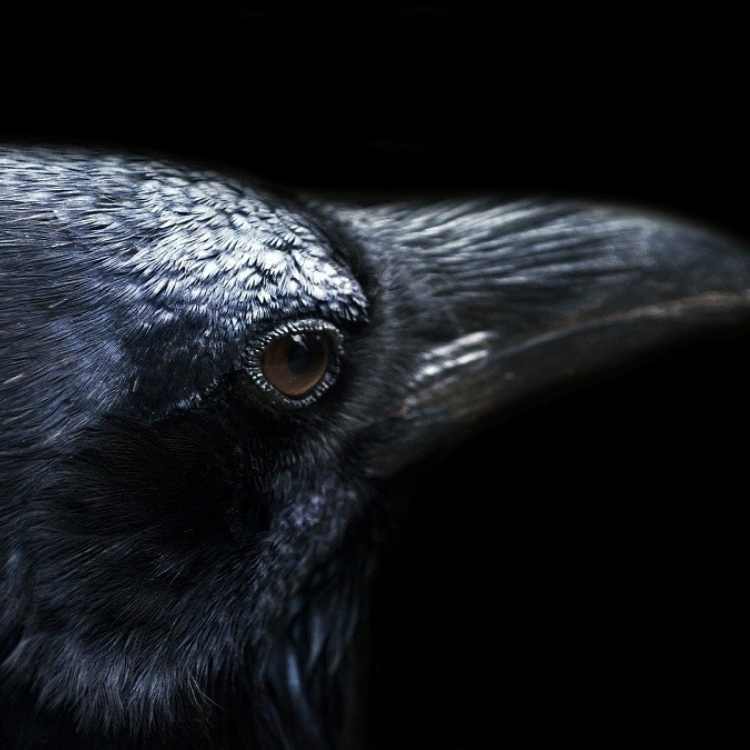
Size
Owls range in size from 6–28 inches in length and have wingspans of 1–6 feet. The great majority of owl species are expected to reside in small to medium in size habitats. They range in weight from two to three pounds, depending on the species.
Crows come in various sizes because there are over 40 species of crow. The American crow stands around 17 inches tall. The fish crow is about 19 inches long. The common crow is significantly larger, at approximately 28 inches in length. Crows typically weigh between 11 and 58 ounces, depending on their species. They have characteristic wedge-shaped tails and a light-colored beak.
Similarities between Owl vs Crow
The Owl and the Crow are both intriguing tiny birds to observe in their natural habitat. The first thing you should know about them is that both of them have sharp claws that they employ to catch their prey/food. Both of these birds have razor-sharp beaks. Both birds rely on their remarkable vision and intellect to locate food, which they do with great success. The final similarity between the two birds is that they both have lovely feathers.
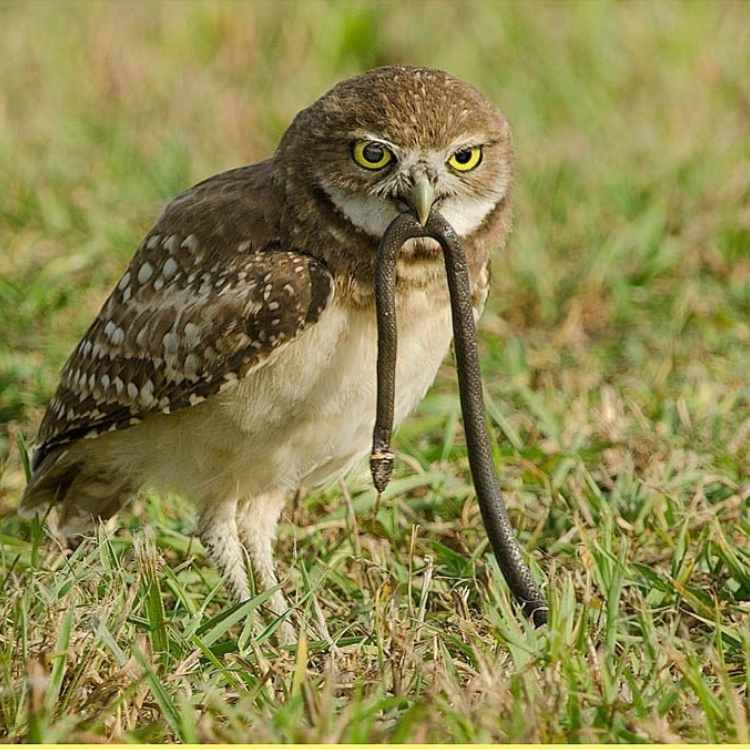
Natural Dynamics: The Complex Relationship Between Owls and Crows
The relationship between owls and crows is one of nature’s most fascinating ecological interactions. These avian neighbors often engage in territorial disputes, particularly when their habitats overlap. While no such thing as a crow owl hybrid exists in nature (despite some internet rumors), these distinct species have evolved a complex predator-prey dynamic. Typically, multiple crows will band together to mob an owl they’ve discovered in their territory, using their numerical advantage to harass and drive away the more powerful predator.
Predatory Behaviors: Do Owls Target Crows?
Many owls, particularly larger species like Great Horned Owls, are opportunistic hunters that will occasionally prey on crows and their nestlings. This hunting behavior extends to various prey – owls do eat snakes regularly, along with small mammals and birds. This predatory relationship explains why crows react so aggressively when spotting an owl – it’s both territorial defense and protection of their young. The antipathy between crows and owls has been observed across different environments, from dense forests to suburban areas, creating a natural balance in their shared ecosystems.
Wildlife biologists have documented fascinating strategies in this avian rivalry – crows use sophisticated communication signals to alert others when an owl is detected, while owls have adapted by becoming increasingly nocturnal to avoid crow mobs. This evolutionary arms race continues to shape both species’ behaviors, highlighting the intricate interspecies relationships that maintain ecological equilibrium in our natural world.
Interesting facts about Owls
In order to keep her young owlets warm, the mother owl would often sit on them or brood on them after they hatch. The mother will also seek food and provide sustenance for the owlets until they are mature enough to care for themselves.
Other interesting facts about owls:
- Female owls are often more significant than male owls in terms of both wing size and weight.
- Typically, newborns will nest for six weeks before taking their maiden flight at the age of seven to eight weeks, depending on the species. By the time the autumn season arrives, most parents have completed the task of rearing their offspring, who are now considered fully grown owls in their own right.
- Even within a specific species, owls can be either pale or black in color, or they can have a variety of tints.
- We have written a couple of articles about the owl: owl vs. eagle, do owls eat snakes, do owls eat cats, dead owl meaning, owl feather meaning, the top 10 questions about owls you should know, the symbolism of white owls, owl meaning and symbolism.
Here you can check all Owl sounds
Interesting facts about Crows
American crows will stand atop anthills and let the ants crawl on them. The ants will be rubbed into the bird’s feathers at that point. This type of action is referred to as anting, and it is employed to fight off parasites. Because of the formic acid secreted from the ants’ bodies, ants can also induce birds to get drunk.
Other intriguing facts about Crows:
- Crows can speak in 15-33 different vocalization
- The Northwestern crow has been recorded engaging in game-like behavior while in flight.
- Crows and ravens have long been revered in mythology, folklore, and indigenous civilizations. They are frequently referred to as cunning con artists.
- We have some more articles about the crow: Grackle Vs Crow, Blackbird Vs Crow, Crows in Mythology, Crows: What Do They Symbolize, Crow Feather Meaning: Light and Dark.
Here you can check all Crow sounds
Field Identification Tips
Owl
The eyes of owls are asymmetrical and of tiny size and weight. Owls come in a vast range of colors, but the most frequent is brown. Owls can swivel their heads more than 250 degrees.
Crow
Crows make a steady caw, caw sound that is unique. It is possible to discern that crows have a primary black hue with feathers that are somewhat coarser in texture if you pay close attention to them.
Final Verdict
The Owl and the Crow are both fascinating little birds to watch in their natural environment, and it’s a treat to see them both together. They both have strong claws, which they use to capture their prey or food.
FAQ
How do you distinguish owls from crows based on physical appearance?
Owls have larger bodies, round heads with forward-facing eyes, and facial disks. Their feathers are typically mottled brown or gray with soft edges for silent flight. Crows have sleeker bodies, pointed wings, and glossy black feathers with a distinctive wedge-shaped tail when flying.
Why do crows mob owls despite the danger?
Crows mob owls as a defensive strategy to protect their nests and young. By gathering in numbers, they overwhelm the more powerful predator, driving it from their territory. This behavior reduces the risk of predation while signaling to other crows that a threat is present.
Both species inhabit diverse environments including woodlands, forests, mountains, and increasingly urban areas. They often overlap in mixed forests with open areas for hunting. Crows adapt well to human settlements, while owls prefer areas with suitable nesting cavities and perches.
How do owls hunt compared to crows?
Owls are silent, specialized hunters with exceptional night vision and hearing that allows them to locate prey in darkness. They swoop down with powerful talons to capture victims. Crows are opportunistic foragers, using intelligence to find food sources ranging from seeds to small animals.
Are owls nocturnal and crows diurnal?
Most owls are nocturnal, hunting primarily at night with specialized adaptations for darkness. Some species, like Short-eared Owls, are crepuscular (active at dawn and dusk). Crows are diurnal, actively foraging during daylight hours and roosting together at night for protection.
How do owls communicate compared to crows?
Owls communicate through various hoots, screeches, and bill-snapping, with calls that carry long distances at night. Crows have a complex vocal repertoire with over 20 different calls, from familiar caws to subtle communications. They can even mimic sounds and recognize human faces.
Do owls and crows migrate seasonally?
Most owl species are non-migratory, remaining in their territories year-round. Some northern owl populations make irregular movements based on prey availability. Many crow populations exhibit partial migration, with northern birds moving southward for winter while southern populations remain resident throughout the year.
